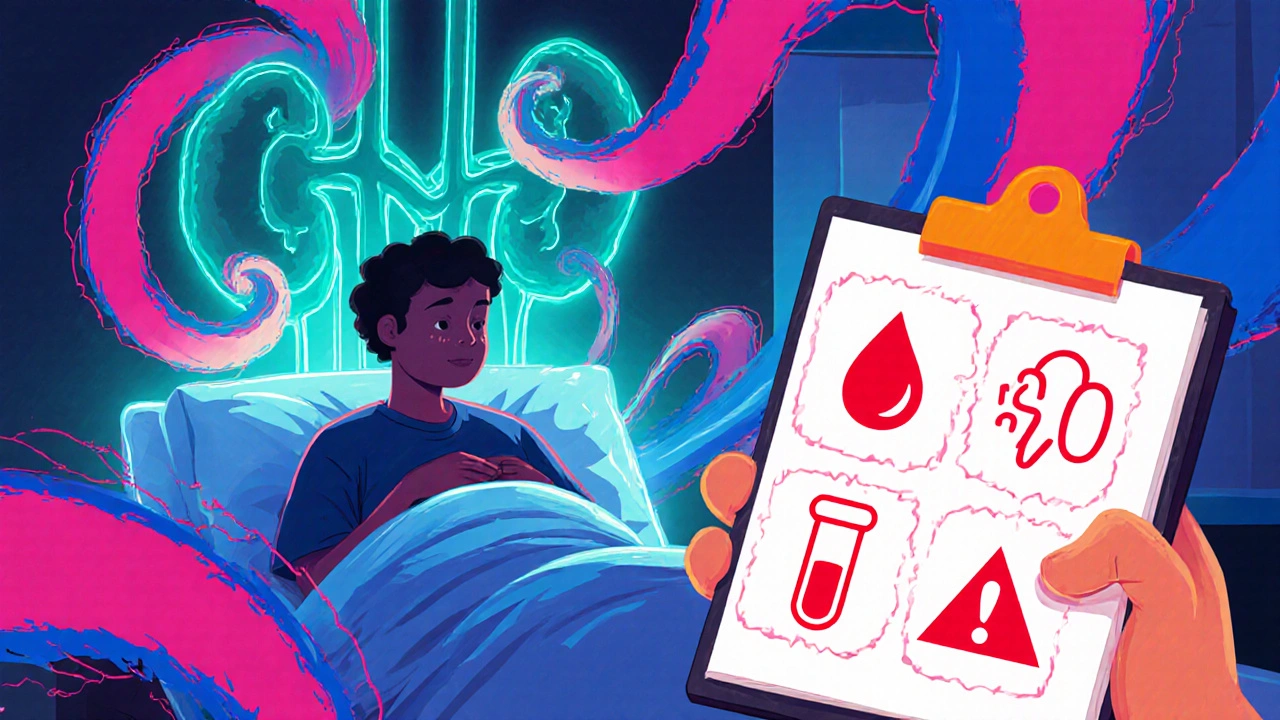When your kidneys start to struggle because of a medication, that’s called nephrotoxicity, the harmful effect of certain drugs on kidney function. Also known as renal toxicity, it’s not rare—many people taking common prescriptions or even over-the-counter painkillers don’t realize they’re putting stress on their kidneys. The kidneys filter blood and remove waste, so when a drug interferes with that process, damage can build up quietly—often without symptoms until it’s advanced.
Nephrotoxicity isn’t caused by one single drug. It’s linked to several classes of medications you might be taking right now. NSAIDs, like ibuprofen or naproxen, commonly used for pain or inflammation can reduce blood flow to the kidneys, especially in older adults or those with existing kidney issues. Antibiotics, including aminoglycosides and certain sulfa drugs, are another major group—some are powerful but hard on the kidneys, especially with long-term use. Even contrast dyes, used in CT scans and other imaging tests, can trigger acute kidney injury in vulnerable people. These aren’t theoretical risks; real cases show up in clinics every day, often because the connection between the drug and the kidney drop wasn’t tracked.
What makes nephrotoxicity tricky is that you won’t always feel it. No sharp pain, no obvious warning. Instead, you might just feel more tired than usual, notice swelling in your ankles, or see your urine output change. Blood tests are the only reliable way to catch it early—creatinine and eGFR levels tell the real story. The good news? Many cases are preventable. If you’re on long-term medication, ask your doctor about kidney monitoring. Switching to a less toxic alternative, adjusting the dose, or staying well-hydrated can make a big difference. Even small changes, like avoiding NSAIDs during dehydration or skipping contrast dyes when possible, can protect your kidneys long-term.
You’ll find posts here that dig into specific drugs linked to kidney harm—from how ampicillin affects kidney function to why certain pain meds are riskier than others. Some articles show you how to spot early signs before it’s too late. Others compare safer alternatives to common nephrotoxic drugs. This isn’t about scare tactics. It’s about giving you clear, practical info so you can take control of your kidney health without stopping the medications you need.

Learn how to monitor cyclosporine nephrotoxicity by tracking kidney function, selecting the right lab method, interpreting C0 and C2 levels, and managing drug interactions.